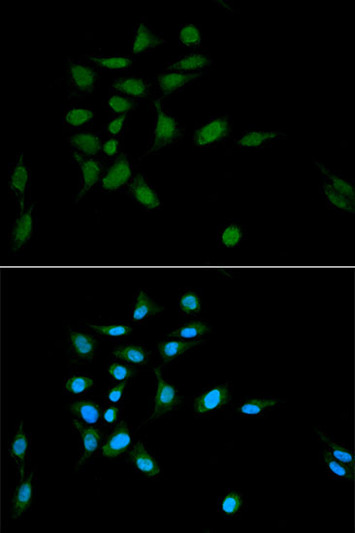| Host: | Goat |
| Applications: | Pep-ELISA/WB |
| Reactivity: | Human |
| Note: | STRICTLY FOR FURTHER SCIENTIFIC RESEARCH USE ONLY (RUO). MUST NOT TO BE USED IN DIAGNOSTIC OR THERAPEUTIC APPLICATIONS. |
| Short Description : | Goat polyclonal antibody anti-BACH1 (250-263) is suitable for use in ELISA and Western Blot research applications. |
| Clonality : | Polyclonal |
| Conjugation: | Unconjugated |
| Isotype: | IgG |
| Formulation: | 0.5 mg/ml in Tris saline, 0.02% sodium azide, pH7.3 with 0.5% bovine serum albumin. NA |
| Purification: | Purified from goat serum by ammonium sulphate precipitation followed by antigen affinity chromatography using the immunizing peptide. |
| Concentration: | 0.5 mg/mL |
| Dilution Range: | Peptide ELISA: antibody detection limit dilution 1:128000.WB: Approx 80kDa band observed in Human Spleen and Peripheral Blood Lymphocytes lysates (calculated MW of 82.0kDa according to NP_001177.1). Recommended concentration: 1-3µg/ml. |
| Storage Instruction: | Store at-20°C on receipt and minimise freeze-thaw cycles. |
| Gene Symbol: | BACH1 |
| Gene ID: | 571 |
| Uniprot ID: | BACH1_HUMAN |
| Immunogen Region: | 250-263 |
| Accession Number: | NP_001177.1 |
| Specificity: | Reported variants represent identical protein: NP_996749.1, NP_001177.1 |
| Immunogen Sequence: | HASVQPNERSENEC |
| Function | Transcriptional regulator that acts as a repressor or activator, depending on the context. Binds to NF-E2 DNA binding sites. Plays important roles in coordinating transcription activation and repression by MAFK. Together with MAF, represses the transcription of genes under the control of the NFE2L2 oxidative stress pathway. |
| Protein Name | Transcription Regulator Protein Bach1Btb And Cnc Homolog 1Ha2303 |
| Database Links | Reactome: R-HSA-9707587Reactome: R-HSA-9707616Reactome: R-HSA-9708530Reactome: R-HSA-9818027 |
| Cellular Localisation | Nucleus |
| Alternative Antibody Names | Anti-Transcription Regulator Protein Bach1 antibodyAnti-Btb And Cnc Homolog 1 antibodyAnti-Ha2303 antibodyAnti-BACH1 antibody |
Information sourced from Uniprot.org









